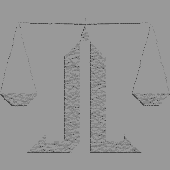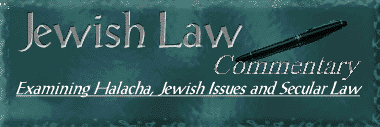

Separating Conjoined Twins
Rabbi Chaim Steinmetz
Separating Conjoined Twins
Rabbi Chaim Steinmetz
In August, 2000, conjoined twins Jodie and Mary were born. After birth, it became clear that if they remained together they would die. Operating to separate them would result in the certain death of Mary, but would give Jodie a reasonable chance at life. Their parents, devout Catholics, refused to allow their children to be separated, accepting it as God's will to let the babies die. In September, a British court overruled the objections of the parents and ordered that the operation be performed. On November 6, Jodie and Mary were surgically separated, and Mary died on the operating table.
This is not the first time this difficult moral dilemma has occurred. In September 1977, conjoined twins were born to a prominent rabbinic family in Lakewood, New Jersey. The children were taken to Children's Hospital in Philadelphia, where Dr. C. Everett Koop (who would later become Surgeon General of the United States) was set to operate on them. In this case as well, if the operation was to be performed, the life of the weaker child would have to be sacrificed. The parents turned to Rabbi Moshe Feinstein, a highly respected halachic authority, to render a decision. After two weeks of deliberations and repeated consultations with the medical staff, Rabbi Feinstein gave a ruling allowing the operation. Even though many on the medical team became impatient waiting for Rabbi Feinstein's ruling, Dr. Koop told them "the ethics and morals involved in this decision are too complex for me...therefore I referred it to an old rabbi in New York. He is a great scholar, a saintly individual; he knows how to answer such questions...". Although Rabbi Feinstein never published a responsa explaining his decision, two recent articles report and reconstruct the reasoning behind this ruling. (Rabbi Moshe David Tendler, {Rabbi Feinstein's son-in-law} in Responsa of Rav Moshe Feinstein: Translation and Commentary (Ktav: Hoboken, 1996) pages 125-135; J. David Bleich, Tradition, Fall 1996, pages 92-125.) There are two primary issues in deciding this question; one is the propriety of sacrificing one life for the sake of saving many others, and the second is how one defines the concept of self defense.
The Talmud establishes that one may not commit murder for self preservation. If a person is threatened that if he does not kill another person, he himself will be killed, he must allow himself to be killed. The Talmud explains that all lives have equal value, and "how do you know your blood is redder than his; maybe his blood is redder than yours". By killing in order to save his own life, the killer has acted immorally by placing his life on a higher level than that of the victim.
But what if by killing one person many lives would be saved? Some say murder is absolutely forbidden, even for the sake of saving many lives (Rambam and Keseph Mishnah Yesodei 5:5; cf. Chidushei Rav Chaim Halevi 5:1). Others argue that under certain circumstances, you may decide on pragmatic grounds to sacrifice one life to save the lives of many. They are of the opinion that in a case where a) the aggressors are pursuing a particular person they have selected to die and b) this particular person would die anyway after the aggressors attacked, one may turn over the selected person in order to save the lives of other people (Rashi Sanhedrin 72b s.v. "Yatza Rosho; cf. Meiri who limits the application of this principle).
This difference of opinion is of great relevance to the case of conjoined twins. If both will die without the operation, and one could survive with the operation, it is as though Mary, the weaker child, has been "selected" for death, because she is certain to die. One could argue that Rashi, who permits turning over the selected individual to the aggressor, would allow the surgeons to perform the surgery. Although Mary will certainly die in surgery, it is as though Mary has been "selected" to die, and she may be killed in order to save Jodie's life. However, the Rambam, who on principle opposes killing one to save many, would oppose this operation. Rabbi Tendler reports that Rabbi Feinstein refused to rely on Rashi's opinion, because he did not want to rely on a disputed opinion in a life and death case.
Rabbi Feinstein finally decided the case based on the law of the pursuer (or "rodeph"). The Torah allows a person to use lethal force, if necessary, to defend his life. In addition, an outsider observing the altercation has an obligation to use lethal force in order to save the life of the victim. The Talmud says that even if the aggressor is too young to understand his actions, he is still considered a rodeph. However, there is an important exception. In a childbirth, where the baby's head has exited the birth canal (making it a full born human), but the difficulty of the subsequent labor is endangering the lives of both mother and child, the child is not in any way considered a rodeph. The Talmud (Sanhedrin 72b) says the reason why the child is not considered a rodeph is because "from heaven she is being pursued".
This statement leaves itself open to interpretation. Rabbi Ben Zion Uziel (Piskei Uziel 51) understands the Talmud as saying that since childbirth is a natural act, the baby is not a rodeph. A person who is endangering another person's life due to an act of God cannot be considered a rodeph. However, Rabbi Feinstein (Cf. Even Haezel 1:9; Iggrot Moshe YD II:60) gives this section a different interpretation. He said that this phrase has to be interpreted according to the Jerusalem Talmud. In the Jerusalem Talmud, the reason why the baby and mother are left alone during childbirth is because they are both considered to be mutual antagonists, two people who are both pursuing each other, and therefore neither has the status of rodeph. According to the Jerusalem Talmud, if two people are fighting a duel, neither is considered a rodeph, because the threat is mutual; so too, the mother and child are endangering each other's lives, and therefore neither can be considered a rodeph.
Can the weaker twin, Mary, be considered a rodeph? This depends on which interpretation is chosen. If you maintain that natural circumstances cannot categorize someone as a rodeph, then there is no way to consider the weaker baby, Mary, to be a rodeph. Her presence as one of the conjoined twins is merely an act of God, which she in no way participated in. Following Rabbi Ben Uziel's logic, Mary is not a rodeph, and it would be forbidden to separate conjoined twins when one will certainly die. However, if what exempts a child during labor from being considered a rodeph is the mutuality of threat, one can argue that Mary can be considered a rodeph. This is because by their continued attachment, Mary is threatening Jodie's life, but Jodie is not threatening Mary's life; Mary's life is not viable, with or without the operation. Since there is no mutual threat, and Mary is the singular cause of this danger, she is considered to be a rodeph. Because Mary is a rodeph, it is permissible to perform the operation that resulted in her death. Similarly, in the Lakewood case, where one baby could clearly be defined as the rodeph, Rabbi Feinstein allowed the operation to proceed.
It is overwhelming for a human to decide "who shall live and who shall die". However, there are times when these decisions must be made. With his courageous decision, Rabbi Feinstein found a way follow Halacha and save a baby's life.
(Click here to see Rabbi Feinstein zt"l's responsum)
==============================
Rabbi Chaim Steinmetz
Tifereth Beth David Jerusalem
6519 Baily Road, C.S.L.
Quebec Canada, H4V 1A1
rabbi@tbdj.org, phone: 514-489-3841, fax: 514-489-2260, http://www.tbdj.org

DISCLAIMER